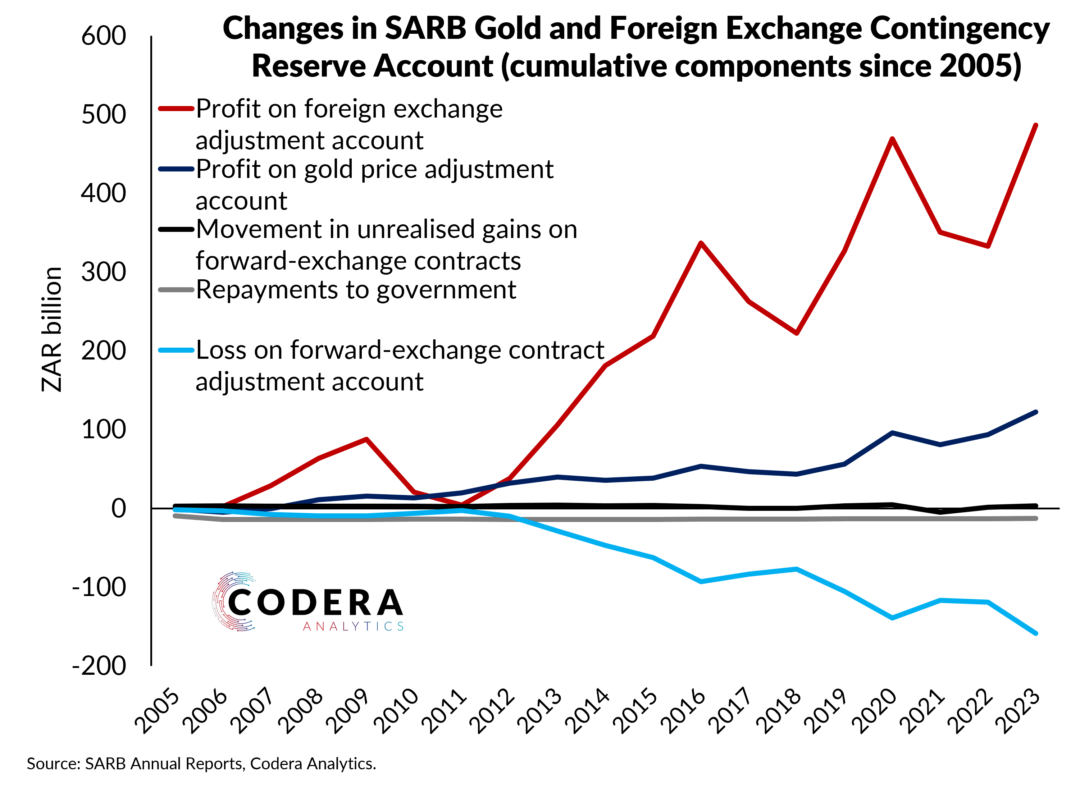A challenge forecasters face is interpreting the drivers of model-based forecasts. In an exchange rate context, this can be particularly challenging given the volatility of currencies and the fact that currencies reflect changes in economic and financial fundamentals, as well as sentiment and expectations about the future. Fundamentals, sentiment and expectations are unobserved, so there is always uncertainty around whether these concepts are accurately measured. Decomposing model drivers into components can lend credibility to a model view of the future, if the interpretation of the model accords with other frameworks and judgements about relationships in financial markets.
In a previous post, I evaluated the long-term fundamental fair value of the rand based on relative prices. In this post, I illustrate how a relatively simple ‘kitchen-sink’ framework can be used to interpret what has been associated with changes in the trade-weighted value of the rand. The model combines Ordinary Least Square (OLS) models, by weighting up individual models using a Bayesian model averaging approach that assigns weights to models based on their their ability to explain GDP while preferring models with a smaller number of explanatory variables. The approach allows us to assess the contribution of a large number of explanatory variables to the level of the real effective exchange rate (the trade-weighted value of the rand, deflated by relative prices), even with a relatively short history of data. It is worth noting that we have found this framework to be quite useful for GDP nowcasting: with this framework capable of out-performing both market analyst and SARB official forecasts (see here for more details about the framework).
We consider a larger number of potential explanatory factors of the rand, including relative economic growth, relative long term interest rates, relative policy rates, South African sovereign risk, the VIX (a common-measure of US stock market volatility and market sentiment), relative inflation, and the relative strength of the US dollar. The model suggests that inflation differentials, sovereign risk and the value of the dollar have been the main contributors to the evolution of the effective exchange rate since 2000. South Africa’s inflation differential declined after the COVID-pandemic, and the model suggests that this was associated with a stronger rand. Over recent years, on the other hand, sovereign risk and a strong dollar are estimated to have been associated with a weaker rand.

It is important to point out that this is still a very simple framework, focused on describing the correlations between variables, not the causal relationships between them. The model results are sensitive to the variables included and their measurement, as well as the effects of potential multi-collinearity between different financial and economic variables. Lastly, this is a fixed coefficient style of model, so it does not capture shifts in the relationships between the explanatory variables and the currency over time. One can also see that there is still a large unexplained component (‘residual’), which at times has been as large as 10% of the de-meaned value of the currency.
As with all forecasts, the principle of caveat emptor, or “buyer beware,” applies. For this reason, at Codera, we estimate a range of different models that incorporate a variety of exchange rate determinants. We judge a model’s usefulness based on its ability to predict future currency dynamics and its ability to explain historical currency movements. The performance of different models change over time, but models can still be very useful in different contexts and we monitor the performance of different models over time. As we show in this paper, you can also use frameworks (including the one used here) for assessing the balance of risk around point forecasts to get a better sense of the certainty to place on a specific forecasts.
In future posts, we will describe our FX model suite and discuss the strategic implications of the suite’s predictions.

